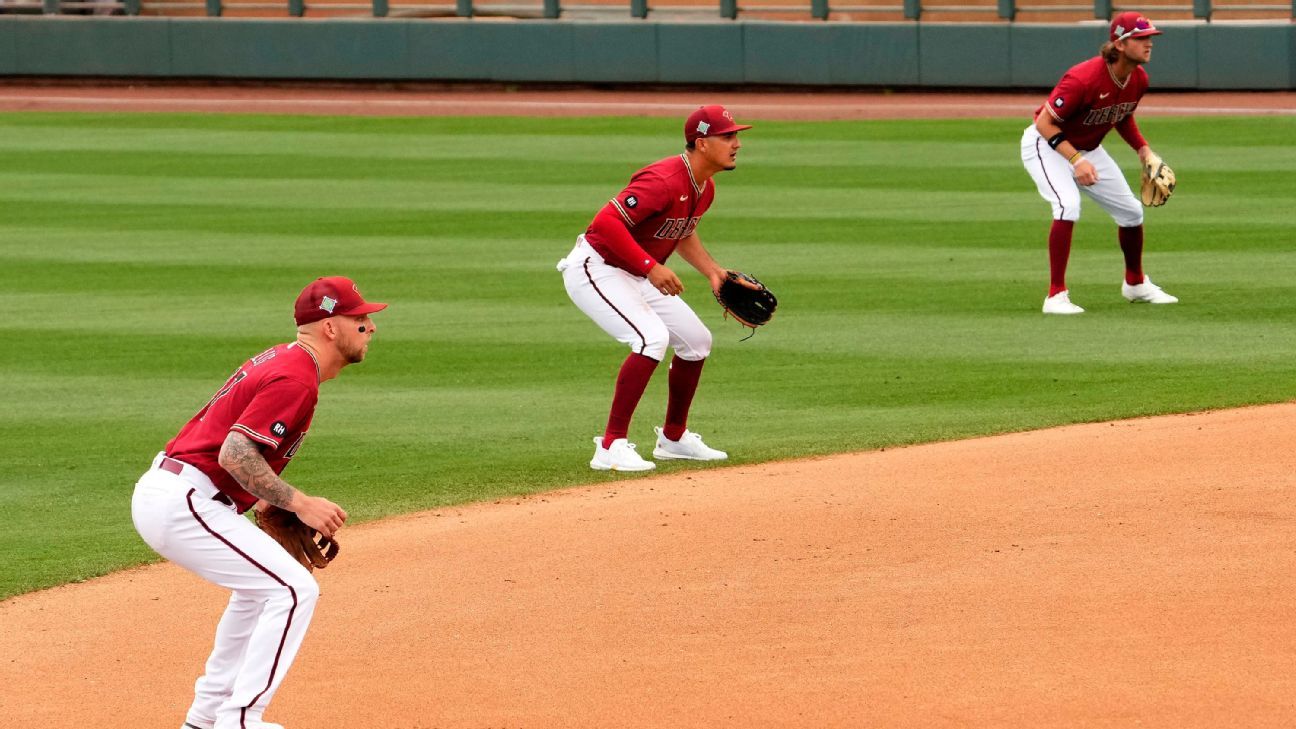Goodbye, shift! Hello, pitch clock!? Why MLB is betting big on new rules for 2023 season

Since commissioner Rob Manfred took over in 2015, Major League Baseball has faced several key challenges — from navigating a COVID-shortened season and a contentious labor battle to controversies about sticky substances on the mound and the baseballs used across the sport. Now with spring camps set to open this week, MLB is about to embark on perhaps its greatest challenge yet: implementing dramatic on-field rule changes designed to make baseball more entertaining and played at a better pace.
Bigger bases, a pitch clock and rules clamping down on the infield shift headline the changes that will debut when spring training games begin on Feb. 24. These changes are part of MLB’s long-term vision for a faster-paced, action-packed future of the sport.
While these new rules have been accompanied by plenty of criticism, particularly by players who believe they are too quickly-implemented and too drastic, the league is confident the game will end up in a better place because of them. Mostly, the commissioner believes that MLB is listening to its fans.
“If you’re addressing what the fans want, you’re more likely than not to get it right,” Manfred said in a recent phone interview with ESPN.
“There’s an initial wave, where it’s ‘Oh my god, (we’re) going to ruin the game. But people see it and get used to it, and a lot of it turns positive for a lot of people.”
Let’s start with the pitch clock: With the bases empty, pitchers will now have 15 seconds to begin their motion once the catcher returns the ball to them and 20 seconds between pitches with runners on.
Pickoff attempts will be limited: Pitchers will also only be allowed two disengagements from the rubber — the number of times he can step off to throw to a base or to get a new sign.
Teams are no longer allowed to shift their infielders: The defense must position two infielders on each side of second base and all four infielders have to be on the infield dirt (or infield grass) as the ball is being pitched.
There will be larger bases: The size of each base will be increased to 18-inch squares instead of 15-inch squares.
After years spent collecting data about what fans enjoy and would like to see improved about the sport, MLB hired former Red Sox and Cubs executive Theo Epstein in 2021 to consult on the experimentation of new rules at the minor league level. This provided the league with an opportunity to try to understand which changes work — and which don’t — before bringing them to the majors.
“At one point, I thought the panacea to fix everything in terms of making more contact for hitters was simply to move the mound further back,” one league official said. “That wasn’t feasible.”
MLB experimented with moving the mound back one foot farther from home plate in the independent Atlantic League but the results didn’t convince them to continue to examine that change at other levels. Other experiments did stick. All in all, the results of over 8,000 games played, under a variety of new rules in the minor leagues, drove how Manfred and his lieutenants arrived with the changes that will begin in 2023.
To find out if fans were in favor of the changes playing out in lower-level ballparks across the country, MLB asked 15,000 minor league fans if they supported the use of a pitch clock, broken up by how many games they attended with it in use.
So starting with the first pitch of the first spring training game, the rules will be enforced to the letter of the law with the goal of getting players used to a new version of the sport as Opening Day approaches.
“Our players are great,” Manfred said. “They’re great athletes. I think they are more than capable of adjusting. The vast majority of them already have experience with these rules in the minor leagues.”
From the pace of games to the amount of action that takes place during them, Manfred’s vision is about to take hold. The commissioner is confident these changes are necessary to keep the game moving forward.
“I’d like to see a game that moves along with a brisk pace,” Manfred said. “A game that has more action in it and a game that emphasizes the athleticism of some of the greatest athletes in the world.”